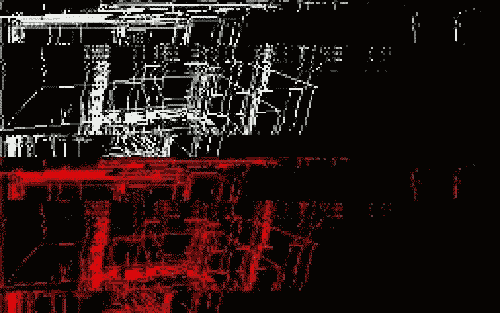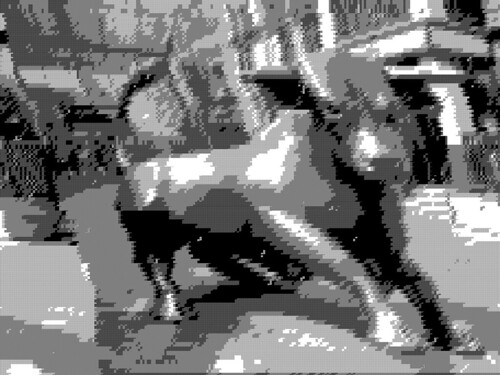A few weeks ago I put forward a proposal for a public art project that focuesd on augmented reality. There could be some confusion over what is meant by public art (if a gallery/event is free to enter isn’t it public?) so I’ll borrow the definition from Wikipedia, which, for all its faults provides a darn good definition:
The term public art properly refers to works of art in any media that have been planned and executed with the specific intention of being sited or staged in the physical public domain, usually outside and accessible to all. The term is especially significant within the art world, amongst curators, commissioning bodies and practitioners of public art, to whom it signifies a particular working practice, often with implications of site specificity, community involvement and collaboration. The term is sometimes also applied to include any art which is exhibited in a public space including publicly accessible buildings.
Glitch the city
My basic idea was to subvert reality by glitching various landmarks around Birmingham. It was a response to Birmingham’s ambitions of becoming a digital city and also how we’re becoming more reliant on 1s and 0s for our wellbeing. I wont go on describing it in more detail as I was unfortunately rejected. I did, however, get some very useful feedback:
- We like the glitch idea, very fun and engaging
- You had chosen some really good landmarks to glitch
- We have concerns that your idea might have some technical implementation issues
- We were concerned that the audience might not “get it”
The technical implementation issues I feel were a moot point. With enough expertise it could be implemented. From that feedback I began to wonder what place, if any, glitch art has in public spaces. There is great interest in everything surrounding glitch art, circuit bending and similar art forms – as witnessed at GLI.TC/H and with examples such as Modified Toy Orchestra. However, you could argue that much of this interest is from those already interested in glitch art, so they would need little convincing and would already see value in such a project proposal.
Bus Tops
At the end of February glitch artworks by myself and others were exhibited on bus stops around London as part of the Bus Tops project. It would be easy to draw a conclusion from that example that glitch art can reach a wider audience and be successful, but what is missing is the voice of the public. Do you think they “got it”?

Without being a devoted follower of the glitch art scene do you think the public, in the ~30 seconds they may be waiting at the bus stop, will realise that it’s artwork that has been glitched/glitch art or will they, as Mez suggested, think that the displays are simply broken?
Glitch Safari
The Glitch Safari project by myself and noteNdo, is an example, not necessarily of creating glitch art for the public, but of recognising the artistic value of glitches seen in public spaces. It was initiated in 2010 during GLI.TC/H: Whilst at a bar, we noticed an arcade machine was glitching.
We instantly saw the artistic value in this and excitedly rushed over with our cameras to snap this feelting moment. For us seeing these glitch in public is the real-world equivalent of winning the lottery (it never happens in real life), but the same question can be asked: Would the wider public get it?
—> .
I think there’s much bigger questions to ask: is glitch art – either in public or confined to galleries – just for glitch artists? Should it aim to reach a wider audience i.e. go public/be more accessible?
This isn’t an attack on the guys that rejected me. I’m very flattered to have been considered for the project – they approached me – and I’m delightfully surprised that they gave me feedback, which usually never happens when being rejected for an art project. Either way, it’s given me a lot to think about and work on, which can only be a good thing, right?
